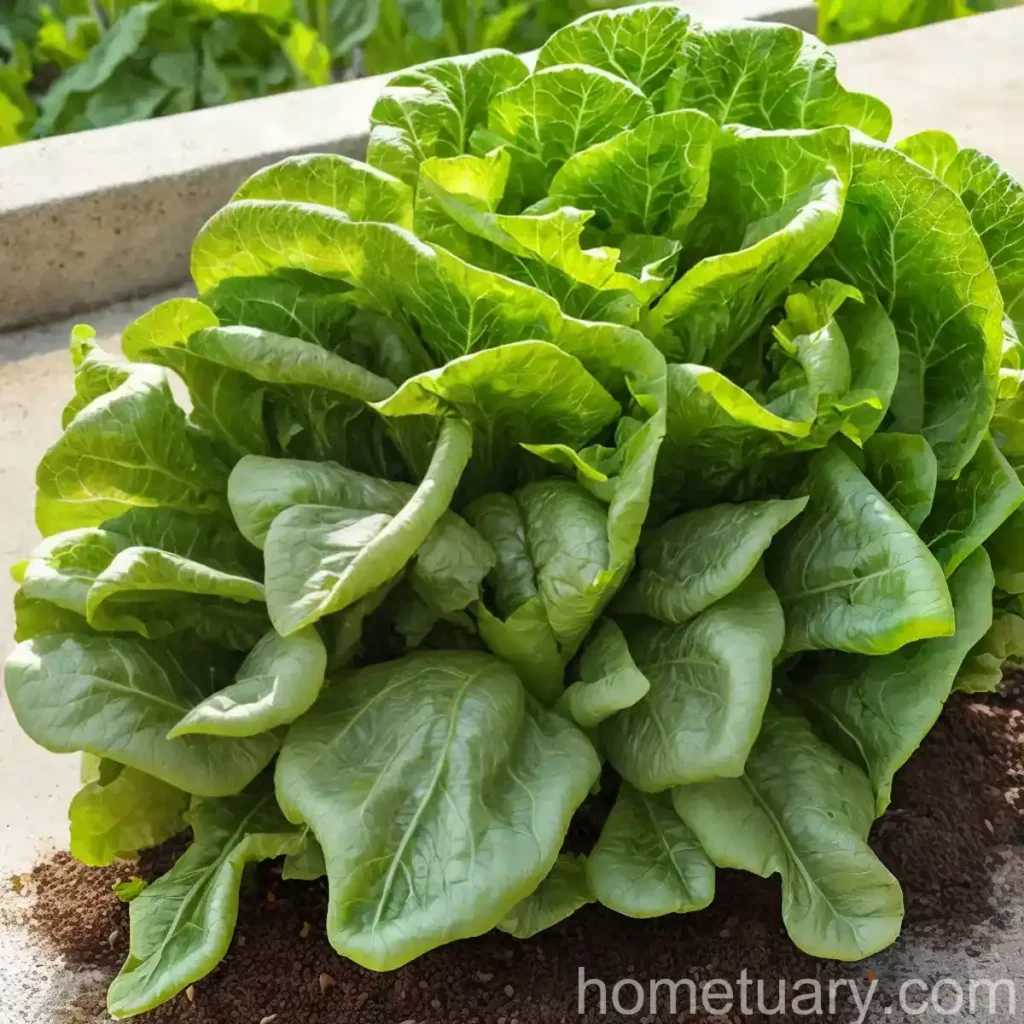The Wonderful World of Lettuce (Lactuca sativa)
Introduction
Lettuce (Lactuca sativa) is a widely cultivated annual plant of the daisy family, Asteraceae. It is most often grown as a leafy vegetable and is a key ingredient in various culinary dishes. Lettuce is also renowned for its nutritional benefits and holds a prominent place in gardening, farming, and sustainable agriculture. In this comprehensive guide, we will delve into the fascinating world of lettuce, exploring its culture, uses, cultivation techniques, common diseases, pests, and much more.
Let’s embark on an exciting journey to discover the various aspects of lettuce, from its cultivation to its crucial role in promoting healthy diets.
What is Lettuce (Lactuca sativa)?
Lettuce, scientifically known as Lactuca sativa, is a versatile annual plant that belongs to the Asteraceae family. Its mild flavor and crispy texture make it a popular choice for salads, sandwiches, and wraps. Lettuce is often categorized into different types based on the shape, texture, and color of its leaves.
Types of Lettuce
Lettuce comes in several distinct varieties, with each type offering a unique appearance and flavor profile. Here are some common types of lettuce:
-
Butterhead Lettuce: This type forms loose heads with tender, sweet leaves. Butterhead lettuce is known for its mild flavor and delicate texture, making it a favored choice for salads.
-
Romaine Lettuce: Also referred to as cos lettuce, it has long, sturdy leaves that are slightly bitter compared to other varieties. Romaine lettuce is often used in Caesar salads and adds a crisp texture to dishes.
-
Loose-leaf Lettuce: As the name suggests, this type does not form a head. Instead, it produces loose, open leaves that are tender and flavorful. Loose-leaf lettuce comes in various colors, including green, red, and purple.
-
Crisphead Lettuce: Commonly known as iceberg lettuce, it is characterized by its tightly packed, crispy heads. Despite its mild taste, it offers a satisfying crunch and is a popular choice for burgers and sandwiches.
Each type of lettuce has its own unique characteristics, making it suitable for different culinary applications.
Key Takeaways – Lettuce (Lactuca sativa)
Before we delve deeper into the world of lettuce, let’s take a quick look at the key aspects that we’ll be exploring:
- Types of lettuce
- Growing lettuce
- Nutritional benefits of lettuce
- How to plant lettuce
- Lettuce varieties
- Lettuce health benefits
- Lactuca sativa properties
- Best conditions for growing lettuce
- Lettuce cultivation techniques
- Lettuce gardening tips
- Lettuce plant care
- Lettuce pest control
- Importance of lettuce in diets
- Lettuce and its role as leafy greens
- Lettuce in salads
- Lettuce recipes
- Lettuce for weight loss
- Lettuce and its impact on heart health
- Organic lettuce farming
- Seasonal lettuce planting
- Lettuce companion plants
- Lettuce seed varieties
- Lettuce leaf shape and size
- Common lettuce diseases
- Lettuce harvesting guide
- Lettuce in hydroponics
- Lettuce container gardening
- Lettuce in vertical gardening
- Planting lettuce in raised beds
- Lettuce and soil requirements
- Lettuce maturity and harvesting time
- Lettuce in urban gardening
- Lettuce in permaculture
- Lettuce in traditional medicine
- Importance of water for lettuce growth
- Lettuce and soil fertility
- Lettuce seed starting guide
- Lettuce as a microgreen
- Growing lettuce from scraps
- Lettuce propagation methods
- Lettuce winter protection
- Topsoil requirements for lettuce
- Companion plants for lettuce
- Lettuce and climate conditions
- Lettuce disease prevention strategies
- Lettuce and organic fertilizers
- Best lettuce for indoor gardening
- Common lettuce pests and control measures
- Lettuce in culinary uses
- Lettuce in sustainable agriculture
This comprehensive guide will cover all these aspects, providing you with in-depth knowledge about lettuce and how to cultivate it successfully.
Culture of Lettuce (Lactuca sativa)
Uses
Lettuce is primarily used as a leafy vegetable and is a staple ingredient in salads, sandwiches, wraps, and various other dishes. Its mild flavor and crunchy texture make it a versatile addition to numerous culinary creations. Moreover, lettuce can also be used as a bed for presenting other ingredients, making it a visually appealing and functional component in food presentation.
Water
Water is essential for the successful cultivation of lettuce. Consistent watering is crucial, as lettuce plants tend to wilt and become bitter if they experience water stress. Adequate soil moisture promotes rapid growth and prevents the development of a bitter taste in the leaves. However, it is important to avoid overwatering, as excessive moisture can lead to root rot and other fungal diseases. The frequency of watering will depend on factors such as the climate, soil type, and stage of growth.
Sunlight
Lettuce thrives in cool, mild temperatures and requires adequate sunlight for optimal growth. While lettuce can tolerate some shade, it generally prefers partial to full sun exposure. In hotter climates, providing some afternoon shade can help prevent the lettuce from bolting or turning bitter prematurely. Adequate sunlight is essential for promoting strong and healthy leaf development.
Fertilizer
When it comes to fertilizing lettuce, a balanced and moderate approach is key. Utilizing a nitrogen-rich fertilizer can encourage lush leaf growth, but excessive nitrogen can lead to an increase in nitrate levels, affecting the flavor and nutritional quality of the lettuce. Organic fertilizers are often preferred for lettuce cultivation, as they promote soil health and stimulate microbial activity, contributing to the overall well-being of the plants.
Soil
Lettuce thrives in well-draining, fertile soil that is rich in organic matter. Loamy soil with a slightly acidic to neutral pH is ideal for lettuce cultivation. Amending the soil with compost or well-rotted manure can enhance its fertility and structure, providing a favorable environment for the growth of healthy lettuce plants.
Pruning
While pruning lettuce is not a common practice, thinning the seedlings can promote better air circulation and reduce competition among the plants. As the lettuce plants mature, harvesting the outer leaves allows the inner leaves to continue growing, extending the overall harvest period.
Propagation
Lettuce is typically propagated from seeds, which can be sown directly into the soil or started indoors for later transplantation. The seeds are relatively small and should be sown at a shallow depth. Once the seedlings have developed several true leaves, they can be transplanted into their final growing location.
Container Popularity
Growing lettuce in containers has become increasingly popular due to the convenience it offers, particularly for urban and small-space gardening. Containers allow for better control of soil quality, moisture levels, and sunlight exposure, making it easier to provide optimal growing conditions for lettuce plants.
Common Diseases
Lettuce is susceptible to various diseases, including fungal infections, bacterial leaf spot, downy mildew, and lettuce mosaic virus. Proper sanitation, crop rotation, and vigilant monitoring are essential for preventing and managing diseases in lettuce crops.
Disease Diagnosis
Diagnosing and managing diseases in lettuce crops requires a keen understanding of the symptoms associated with specific pathogens. Early detection and prompt action are crucial for preventing the spread of diseases and minimizing crop losses.
Common Pests
Aphids, slugs, snails, and caterpillars are among the common pests that can afflict lettuce plants. Identifying the signs of pest infestations and implementing suitable control measures are essential for protecting lettuce crops from damage.
Botanist’s Tips
- Selecting suitable lettuce varieties based on the local climate and growing conditions can significantly impact the success of the cultivation.
- Practicing crop rotation can help minimize the buildup of pests and diseases in the soil, promoting the long-term health of lettuce crops.
- Regularly monitoring the moisture levels of the soil and providing consistent watering are crucial for preventing issues such as tip burn and bitterness in lettuce leaves.
Fun Facts
- Lettuce is believed to have been cultivated for over 4500 years, with its origins traced back to ancient Egypt.
- The name “lettuce” is derived from the Latin word “lactuca,” which means “milk,” referring to the milky substance found in the stems of some lettuce varieties.
- There are over 100 different lettuce varieties, each offering distinct flavors, textures, and colors.
The culture of lettuce encompasses various aspects, including its uses, water and sunlight requirements, soil and fertilizer needs, propagation methods, container popularity, common diseases, pest management, and invaluable insights from botanists. Understanding these facets is essential for successfully cultivating and maintaining healthy lettuce crops.
Lettuce (Lactuca sativa) – Health Benefits and Culinary Uses
Lettuce is not only a delightful addition to culinary creations but also offers a myriad of health benefits. Its low-calorie content and high nutrient density make it a valuable component in promoting healthy diets.
Nutritional Benefits of Lettuce
Lettuce is a rich source of essential nutrients, offering a range of health benefits. Some of the key nutrients found in lettuce include:
-
Vitamins and Minerals: Lettuce is a good source of vitamin A, vitamin K, vitamin C, and folate. It also contains minerals such as potassium, iron, and calcium, contributing to overall health and well-being.
-
Dietary Fiber: The fiber content in lettuce supports digestive health and can aid in maintaining healthy cholesterol levels.
-
Antioxidants: Certain varieties of lettuce, particularly those with vibrant, colorful leaves, contain antioxidants that can help combat oxidative stress and promote overall health.
Importance of Lettuce in Diets
Incorporating lettuce into regular diets can provide numerous health benefits, including:
-
Weight Management: The low calorie and high water content of lettuce make it an ideal choice for individuals aiming to manage their weight or reduce calorie intake.
-
Digestive Health: The fiber content in lettuce supports healthy digestion and regular bowel movements, contributing to overall digestive well-being.
-
Heart Health: The potassium content in lettuce can aid in maintaining healthy blood pressure levels, while the presence of vitamin K is beneficial for cardiovascular health.
Lettuce as Leafy Greens
Lettuce falls into the category of leafy greens, which are known for their nutrient density and health-promoting properties. Consuming a variety of leafy greens, including lettuce, can offer a diverse array of vitamins, minerals, and phytonutrients that are essential for maintaining optimal health.
Lettuce in Salads and Culinary Creations
Lettuce is a staple ingredient in salads and is often featured in diverse culinary creations, including wraps, sandwiches, and smoothies. Its mild flavor and crisp texture make it a versatile addition to various dishes, while also providing valuable nutrients and visual appeal to food presentations.
Lettuce Recipes
From classic Caesar salads to creative lettuce wraps, there are numerous ways to incorporate lettuce into culinary creations. Here are a few popular recipes featuring lettuce:
-
Classic Caesar Salad: A traditional Caesar salad typically includes romaine lettuce, garlic croutons, parmesan cheese, and a creamy Caesar dressing.
-
Lettuce Wraps: Lettuce leaves can serve as a nutritious and low-carb alternative to tortillas or bread, providing a crisp and refreshing base for fillings such as seasoned ground meat, tofu, or vegetables.
-
Green Smoothies: Adding a handful of fresh lettuce leaves to a green smoothie can increase its nutrient content, providing an additional boost of vitamins and minerals.
Lettuce for Weight Loss
Lettuce’s high water content and low calorie density make it a valuable addition to weight loss diets. Including lettuce in meals can help increase satiety without significantly impacting calorie intake, making it easier to manage weight and promote a healthy body composition.
Lettuce and Heart Health
The potassium content in lettuce plays a crucial role in promoting healthy blood pressure levels, potentially reducing the risk of cardiovascular diseases. Additionally, the presence of vitamin K in lettuce is beneficial for blood clotting and overall heart health.
Lettuce’s nutritional benefits and culinary uses make it a valuable addition to healthy diets, offering a wide array of essential nutrients and health-promoting properties. Its versatility in culinary creations and its role in supporting weight management and heart health underscore the significance of including lettuce in regular meal plans.
Cultivation Techniques for Lettuce (Lactuca sativa)
Best Conditions for Growing Lettuce
Successful lettuce cultivation relies on providing optimal growing conditions. Some of the best practices for growing lettuce include:
-
Soil Preparation: Well-draining, fertile soil with a slightly acidic to neutral pH is ideal for lettuce cultivation. Amending the soil with organic matter can enhance its fertility and structure.
-
Watering: Consistent and adequate watering is crucial for healthy lettuce growth. While lettuce plants require moisture, it is essential to avoid overwatering, which can lead to root rot and other issues.
-
Temperature: Lettuce thrives in cool temperatures and prefers partial to full sun exposure. Protection from excessive heat can help prevent the plants from bolting prematurely.
-
Fertilization: Applying a balanced fertilizer can support the nutrient needs of lettuce plants. Organic fertilizers are often favored for their contributions to soil health and microbial activity.
Lettuce Gardening Tips
-
Succession Planting: Staggering the planting of lettuce seeds can result in a continuous harvest, providing a steady supply of fresh lettuce throughout the growing season.
-
Maintenance: Regularly monitoring the moisture levels of the soil and addressing any pest or disease issues promptly are essential for maintaining healthy lettuce crops.
-
Harvesting: Harvesting lettuce by selectively picking the outer leaves allows the inner leaves to continue growing, prolonging the harvest period. Once the plants reach maturity, they can be harvested in their entirety.
Lettuce Plant Care
Caring for lettuce plants involves various aspects, such as watering, fertilization, pest management, and ensuring suitable growing conditions. Here are some key considerations for lettuce plant care:
-
Watering: Providing consistent moisture without waterlogging the soil is essential for preventing issues such as tip burn and bitterness in lettuce leaves.
-
Fertilization: Using a balanced fertilizer can support healthy leaf growth and overall plant vigor. However, it is important to avoid excessive nitrogen, which can negatively impact the flavor and quality of the lettuce.
-
Pest Control: Monitoring for signs of pest infestations and implementing suitable control measures, such as using natural predators or organic pest control products, is crucial for protecting lettuce crops.
-
Climate Considerations: Adapting cultivation techniques to the local climate, such as providing shade during hot periods, can help maintain optimal growing conditions for lettuce plants.
Lettuce Pest Control
Implementing effective pest control measures is essential for protecting lettuce crops from damage. Some common pests that can afflict lettuce plants include aphids, slugs, snails, and caterpillars. Here are some pest control strategies for managing these issues:
-
Biological Control: Introducing natural predators, such as ladybugs or lacewings, can help control aphid populations in lettuce crops.
-
Barriers and Traps: Utilizing physical barriers and traps, such as copper tape or beer traps for slugs and snails, can help prevent pest infestations.
-
Companion Planting: Growing pest-repelling plants, such as marigolds or basil, alongside lettuce can help deter pests and reduce infestation risks.
-
Organic Pest Control Products: Using organic pest control products, such as neem oil or insecticidal soaps, can help manage pest populations while minimizing the impact on beneficial insects and the environment.
Understanding the best conditions for growing lettuce, implementing effective gardening tips and plant care practices, and employing suitable pest control strategies are essential for successful lettuce cultivation.
Lactuca sativa Properties and Varieties
Lettuce Varieties
Lettuce varieties encompass a diverse range of colors, textures, and flavors, offering a breadth of options for culinary and ornamental purposes. Some popular lettuce varieties include:
-
Butterhead Lettuce Varieties: Bibb, Boston, and Tom Thumb are renowned for their tender, buttery leaves and mild flavors.
-
Romaine Lettuce Varieties: Little Gem, Parris Island, and Cosmo are favored for their sturdy, crisp leaves and slightly bitter taste.
-
Loose-Leaf Lettuce Varieties: Red Sails, Black Seeded Simpson, and Salad Bowl are known for their loose, open leaves and vibrant colors.
-
Crisphead Lettuce Varieties: Great Lakes, Iceberg, and Crispino are recognized for their tightly packed, crisp heads and mild flavors.
Each lettuce variety offers distinct characteristics, making it suitable for specific culinary applications and garden preferences.
Lettuce Leaf Shape and Size
Lettuce leaves come in a range of shapes and sizes, each contributing to the visual appeal and texture of the plant. Some common leaf shapes and sizes include:
-
Oval Leaves: Found in varieties such as Butterhead and Romaine lettuce, oval leaves offer a classic lettuce appearance and a satisfying texture.
-
Serrated Leaves: Varieties such as Red Oak and Green Frilly feature serrated leaves, adding visual interest and a delicate crunch to dishes.
-
Large Leaves: Certain lettuce varieties, including those classified as loose-leaf or romaine types, produce large leaves that are suitable for use in wraps, sandwiches, and as a base for salads.
The diversity in lettuce leaf shapes and sizes allows for a broad range of culinary and visual possibilities, catering to different preferences and applications.
Lettuce Seed Varieties
Lettuce seeds are available in numerous varieties, each offering unique characteristics and growth patterns. Some common lettuce seed varieties include:
-
Slow-Bolt Varieties: Slow-bolt lettuce varieties are bred to withstand heat and resist premature bolting, ensuring a prolonged harvest period.
-
Quick-Growing Varieties: Ideal for early-season planting and fast results, quick-growing lettuce varieties can provide a rapid supply of fresh lettuce leaves.
-
Colorful Varieties: Lettuce seeds come in various colors, ranging from vibrant greens to deep reds and purples, offering an array of options for visually striking salads and dishes.
Selecting lettuce seed varieties based on the desired growth traits, climate considerations, and culinary uses is essential for achieving successful lettuce cultivation.
Lettuce Companion Plants
Companion planting involves cultivating different plants in close proximity to harness mutually beneficial relationships, such as pest control, nutrient sharing, and space optimization. Some suitable companion plants for lettuce include:
-
Herbs: Planting herbs like thyme, dill, and cilantro near lettuce can help deter pests and add culinary variety to the garden.
-
Flowers: Nasturtiums, marigolds, and calendulas can serve as attractive companion plants while also helping repel pests and attract beneficial insects.
-
Brassicas: Certain members of the brassica















